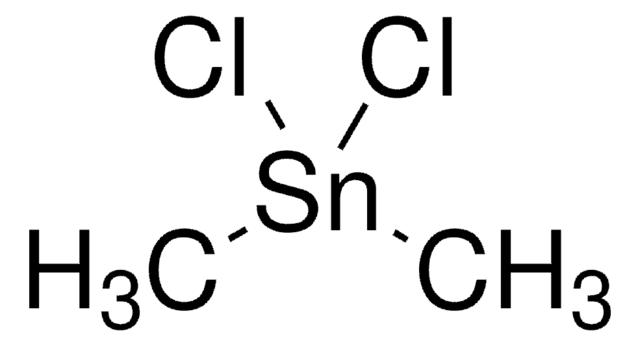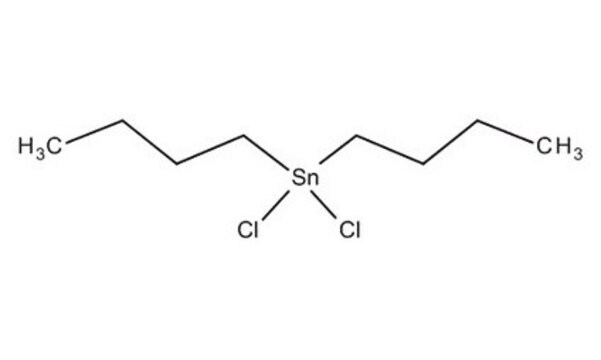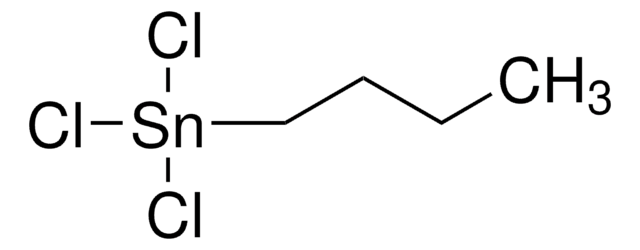Key Documents
205494
Dibutyltin dichloride
96%
Synonim(y):
Dibutyldichlorotin
About This Item
Polecane produkty
Poziom jakości
Próba
96%
Postać
solid
tw
135 °C/10 mmHg (lit.)
mp
37-40 °C (lit.)
ciąg SMILES
CCCC[Sn](Cl)(Cl)CCCC
InChI
1S/2C4H9.2ClH.Sn/c2*1-3-4-2;;;/h2*1,3-4H2,2H3;2*1H;/q;;;;+2/p-2
Klucz InChI
RJGHQTVXGKYATR-UHFFFAOYSA-L
Szukasz podobnych produktów? Odwiedź Przewodnik dotyczący porównywania produktów
Zastosowanie
- Effects of dibutyltin compounds on PPARγ/RXRα activity: Studies the impact of various dibutyltin compounds, including dibutyltin dichloride, on adipogenesis and inflammation in mammalian cells, emphasizing their effects on the PPARγ/RXRα pathway (Milton et al., 2017).
Hasło ostrzegawcze
Danger
Zwroty wskazujące rodzaj zagrożenia
Zwroty wskazujące środki ostrożności
Klasyfikacja zagrożeń
Acute Tox. 2 Inhalation - Acute Tox. 3 Oral - Acute Tox. 4 Dermal - Aquatic Acute 1 - Aquatic Chronic 1 - Eye Dam. 1 - Muta. 2 - Repr. 1B - Skin Corr. 1B - Skin Sens. 1 - STOT RE 1 Oral - STOT SE 1 Oral
Organy docelowe
thymus
Kod klasy składowania
6.1A - Combustible acute toxic Cat. 1 and 2 / very toxic hazardous materials
Klasa zagrożenia wodnego (WGK)
WGK 3
Temperatura zapłonu (°F)
235.4 °F - closed cup
Temperatura zapłonu (°C)
113 °C - closed cup
Środki ochrony indywidualnej
Eyeshields, Faceshields, Gloves, type P3 (EN 143) respirator cartridges
Wybierz jedną z najnowszych wersji:
Masz już ten produkt?
Dokumenty związane z niedawno zakupionymi produktami zostały zamieszczone w Bibliotece dokumentów.
Klienci oglądali również te produkty
Nasz zespół naukowców ma doświadczenie we wszystkich obszarach badań, w tym w naukach przyrodniczych, materiałoznawstwie, syntezie chemicznej, chromatografii, analityce i wielu innych dziedzinach.
Skontaktuj się z zespołem ds. pomocy technicznej













